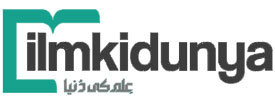
Blockchain technology is revolutionizing industries by providing a decentralized, secure, and transparent way of conducting transactions. Initially popularized by Bitcoin, blockchain has now expanded its reach to finance, healthcare, supply chain management, and many other sectors. This article explores the transformative impact of blockchain technology, its advantages, challenges, and future trends.

What is Blockchain Technology?
Blockchain is a distributed ledger technology (DLT) that records transactions securely across multiple computers. It consists of blocks that store data, and these blocks are linked together in a chain, ensuring data integrity and security.
Key Features of Blockchain:
-
Decentralization – Eliminates the need for intermediaries.
-
Transparency – Transactions are visible to authorized users.
-
Security – Data is encrypted and immutable.
-
Efficiency – Reduces transaction processing time.
How Blockchain is Transforming Various Industries
1. Financial Sector
Blockchain is disrupting traditional banking and finance through:
-
Cryptocurrencies – Bitcoin, Ethereum, and other digital currencies offer an alternative to fiat money.
-
Smart Contracts – Self-executing contracts that eliminate intermediaries.
-
Cross-Border Payments – Faster and cheaper international transactions.
Example: Ripple (XRP) is being used by financial institutions for real-time global payments.
2. Healthcare Industry
Blockchain enhances healthcare by:
-
Securing Patient Records – Ensuring data privacy and integrity.
-
Streamlining Supply Chains – Tracking the authenticity of drugs.
-
Facilitating Research – Secure sharing of medical data.
Example: MedRec uses blockchain to manage patient health records securely.
3. Supply Chain Management
Blockchain improves supply chains by:
-
Enhancing Transparency – Tracking products from source to consumer.
-
Preventing Fraud – Verifying authenticity of goods.
-
Reducing Costs – Eliminating intermediaries.
Example: Walmart uses blockchain to track food supply chains, ensuring safety and efficiency.
4. Real Estate
Blockchain revolutionizes real estate through:
-
Tokenization of Assets – Enabling fractional ownership.
-
Smart Contracts – Automating property transactions.
-
Improved Security – Preventing fraudulent activities.
Example: Propy enables blockchain-based real estate transactions.
5. Government and Voting Systems
Governments are leveraging blockchain for:
-
Digital Identity Management – Secure citizen records.
-
Transparent Elections – Fraud-proof voting mechanisms.
-
Public Record Keeping – Secure land registry systems.
Example: Estonia uses blockchain for secure digital identity and e-governance.
6. Cybersecurity
Blockchain enhances cybersecurity by:
-
Preventing Data Breaches – Decentralized storage eliminates single points of failure.
-
Enhancing Encryption – Ensuring secure communication.
-
Reducing DDoS Attacks – Distributed networks resist attacks.
Example: Guardtime secures government and enterprise data using blockchain.
Advantages of Blockchain Technology
| Advantage | Description |
|---|---|
| Security | Data is encrypted and immutable. |
| Transparency | Open ledger ensures trust. |
| Efficiency | Faster transactions with lower costs. |
| Decentralization | Removes reliance on central authorities. |
| Smart Contracts | Automates and secures agreements. |
Challenges of Blockchain Technology
| Challenge | Description |
| Scalability | High transaction volume can slow networks. |
| Regulatory Issues | Governments are still adapting regulations. |
| Energy Consumption | Proof-of-work mechanisms require high energy. |
| Integration Challenges | Legacy systems need adaptation. |
| Privacy Concerns | Public ledgers may expose sensitive data. |
Future of Blockchain Technology
The future of blockchain looks promising with several innovations in progress:
1. Adoption in Banking and Finance
Central Bank Digital Currencies (CBDCs) are being explored by governments worldwide.
2. Advancements in Smart Contracts
Ethereum 2.0 and other blockchain platforms are enhancing contract efficiency.
3. Integration with IoT (Internet of Things)
Blockchain can secure IoT devices against cyber threats.
4. Sustainability Initiatives
Eco-friendly blockchain solutions are being developed to reduce energy consumption.












.jpg)


